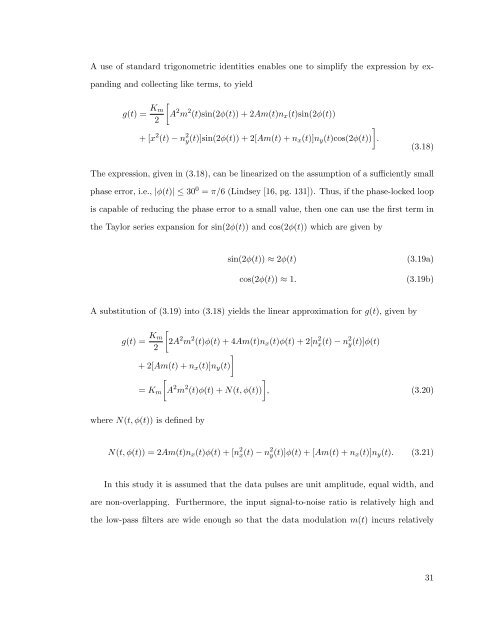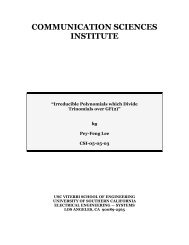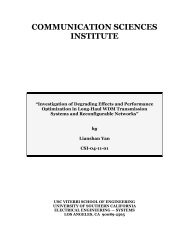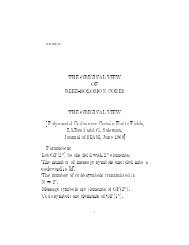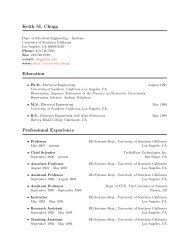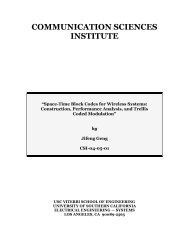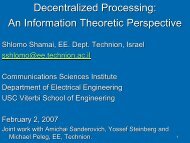Decoding Error-Correction Codes Utilizing Bit-Error Probability ...
Decoding Error-Correction Codes Utilizing Bit-Error Probability ...
Decoding Error-Correction Codes Utilizing Bit-Error Probability ...
Create successful ePaper yourself
Turn your PDF publications into a flip-book with our unique Google optimized e-Paper software.
A use of standard trigonometric identities enables one to simplify the expression by expanding<br />
and collecting like terms, to yield<br />
g(t) = K [<br />
m<br />
A 2 m 2 (t)sin(2φ(t)) + 2Am(t)n x (t)sin(2φ(t))<br />
2<br />
]<br />
+ [x 2 (t) − n 2 y(t)]sin(2φ(t)) + 2[Am(t) + n x (t)]n y (t)cos(2φ(t)) .<br />
(3.18)<br />
The expression, given in (3.18), can be linearized on the assumption of a sufficiently small<br />
phase error, i.e., |φ(t)| ≤ 30 0 = π/6 (Lindsey [16, pg. 131]). Thus, if the phase-locked loop<br />
is capable of reducing the phase error to a small value, then one can use the first term in<br />
the Taylor series expansion for sin(2φ(t)) and cos(2φ(t)) which are given by<br />
sin(2φ(t)) ≈ 2φ(t)<br />
cos(2φ(t)) ≈ 1.<br />
(3.19a)<br />
(3.19b)<br />
A substitution of (3.19) into (3.18) yields the linear approximation for g(t), given by<br />
g(t) = K [<br />
m<br />
2A 2 m 2 (t)φ(t) + 4Am(t)n x (t)φ(t) + 2[n 2<br />
2<br />
x(t) − n 2 y(t)]φ(t)<br />
]<br />
+ 2[Am(t) + n x (t)]n y (t)<br />
]<br />
= K m<br />
[A 2 m 2 (t)φ(t) + N(t, φ(t)) , (3.20)<br />
where N(t, φ(t)) is defined by<br />
N(t, φ(t)) = 2Am(t)n x (t)φ(t) + [n 2 x(t) − n 2 y(t)]φ(t) + [Am(t) + n x (t)]n y (t). (3.21)<br />
In this study it is assumed that the data pulses are unit amplitude, equal width, and<br />
are non-overlapping. Furthermore, the input signal-to-noise ratio is relatively high and<br />
the low-pass filters are wide enough so that the data modulation m(t) incurs relatively<br />
31


